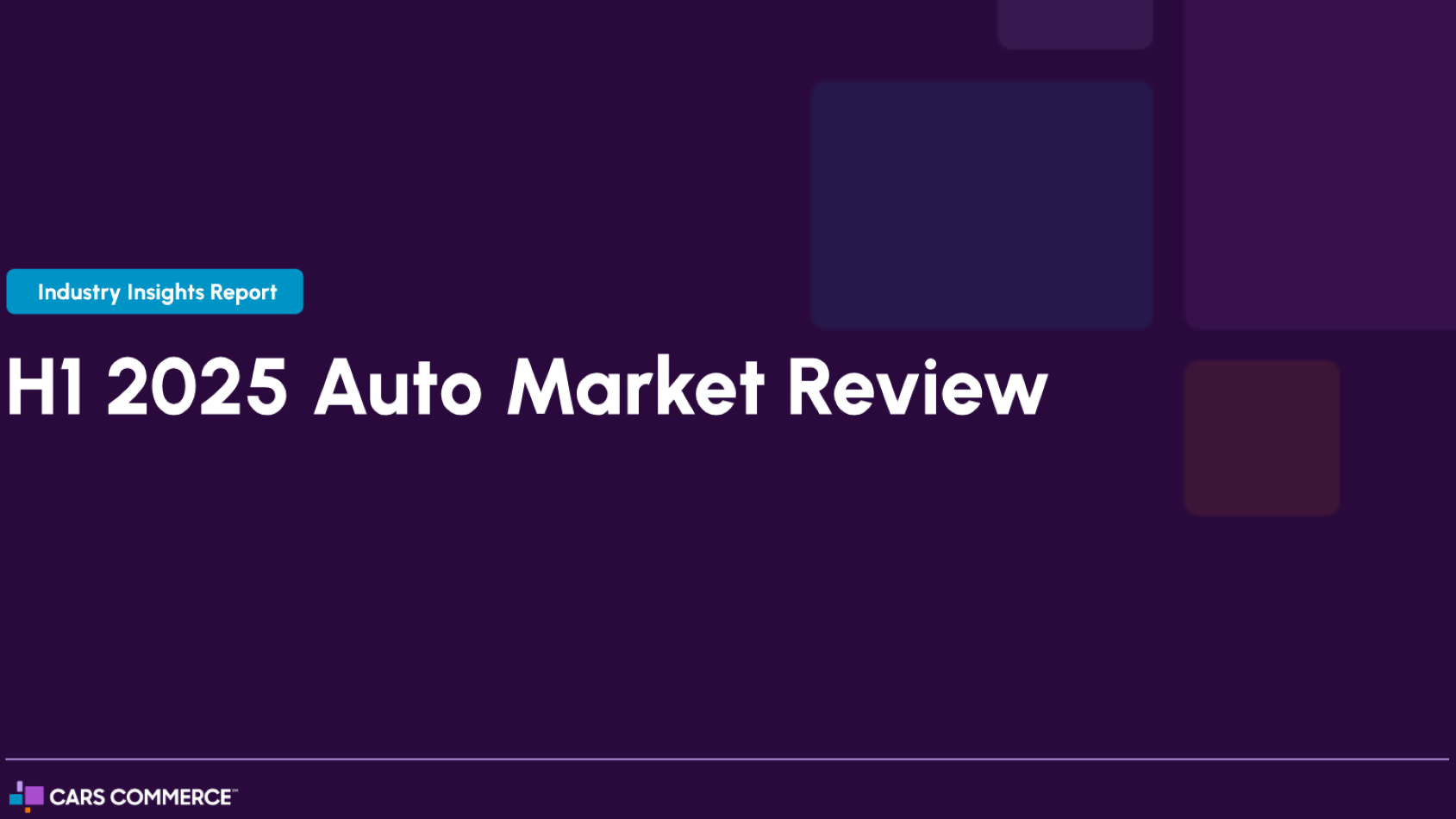Tariff effects drive used inventory, demand and prices up, report shows

Image courtesy of Cars Commerce.
By subscribing, you agree to receive communications from Auto Remarketing and our partners in accordance with our Privacy Policy. We may share your information with select partners and sponsors who may contact you about their products and services. You may unsubscribe at any time.
The direct effects of tariffs on used vehicles are negligible.
But that doesn’t mean they have no effect at all.
Cars Commerce’s Industry Insights 1H Report showed the major impact of tariffs on the used-vehicle market, in areas ranging from supply and the age of available used units to consumer demand and prices.
“Tariff pressure didn’t just affect new vehicles,” Cars Commerce industry and marketplace analytics principal David Greene said in his analysis of the report. “It created ripple effects in the used market.”
For starters, used inventory six months into 2025 was up 2% over the same time last year, which the report attributed to a surge in trade-ins fueled by the new-car buying frenzy as consumers raced to get their vehicles before tariffs drove the prices higher.
Indeed, the numbers show used-car supply, as measured by inventory on the Cars.com marketplace, fell 0.6% year-over-year in the first quarter but spiked to a 4.7% YOY rise in Q2, following White House announcements about the coming tariffs in February and March, and their implementation in April.
Subscribe to Auto Remarketing to stay informed and stay ahead.
By subscribing, you agree to receive communications from Auto Remarketing and our partners in accordance with our Privacy Policy. We may share your information with select partners and sponsors who may contact you about their products and services. You may unsubscribe at any time.
And that increased volume wasn’t the only change in the used-vehicle supply. The report showed those cars coming in were also newer, lower mileage and very much in demand. The average time for used vehicles to be listed on Cars.com before being sold fell to 52 days during the first half of the year, a 4.8% year-over-year drop driven in large part by a 6.7% decrease in Q2.
The new-car market also played a role in the jump in used-car demand, Cars Commerce said. According to the report, inventory of new vehicles priced less than $30,000 averaged just 13.6% of the market in the first half of 2025. That number has fallen for three consecutive months and is a significant reduction from the 38% share in 2019.
The report said 92% of those entry-level vehicles are built outside of the U.S. — Honda Civic and Toyota Corolla are the only exceptions — meaning they’re disproportionately affected by tariffs. With so few options and prices likely to rise due to tariffs, the target market for those vehicles are increasingly being driven toward more affordable used options.
Of course, increased demand has a price, and used-vehicle prices, which had been headed downward, are now trending up. Following a 0.9% YOY decline in Q1, popped up 1.6% in Q2 to $28,939.
Cars Commerce said the rapid shifts in used-car supply, sales velocity and pricing from Q1 to Q2 underscore how strongly tariffs have influenced consumer behavior and dealership inventory dynamics.
Greene said it shows “how quickly shopper behavior shifted. The sweet spot right now? Used cars priced between $20,000-$30,000 — they offer the best balance of affordability and condition, and they’re flying off lots.”
Used electric vehicle prices, which have fallen for 28 consecutive months and now stand at $35,629, are likely “bottoming out,” the report said, noting used EVs depreciate more quickly than gas vehicles due to “rapid tech obsolescence, oversupply of near-new vehicles and a luxury-heavy model mix.” It added the end of the used-EV tax credit, coming Sept. 30, will also erode their affordability.
Greene’s analysis and the full report are available here.


